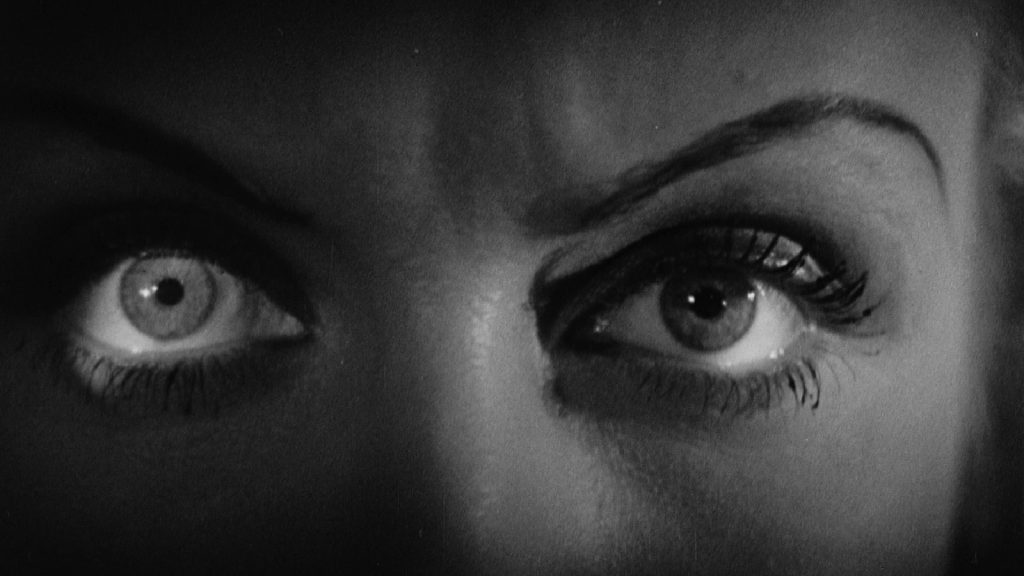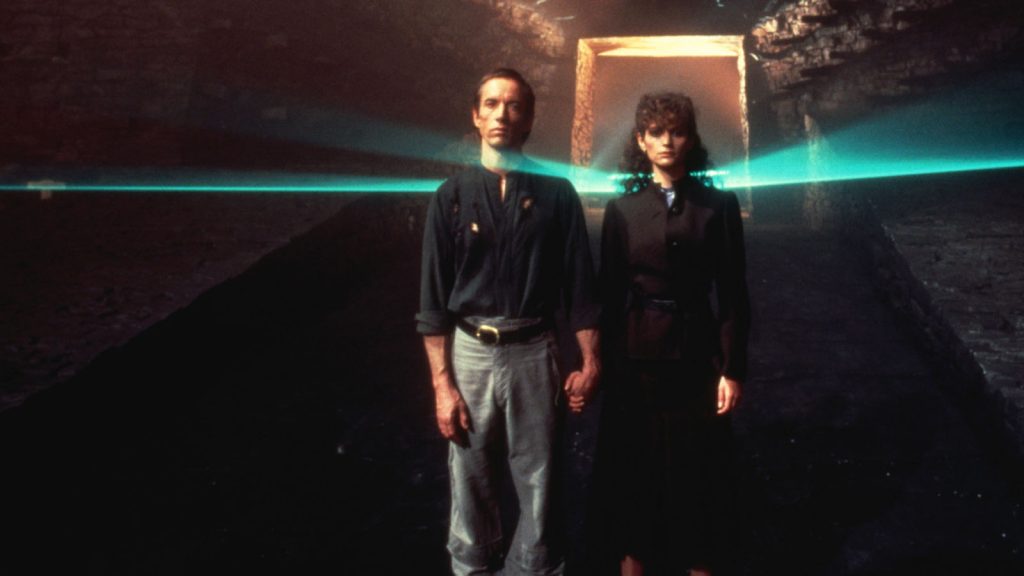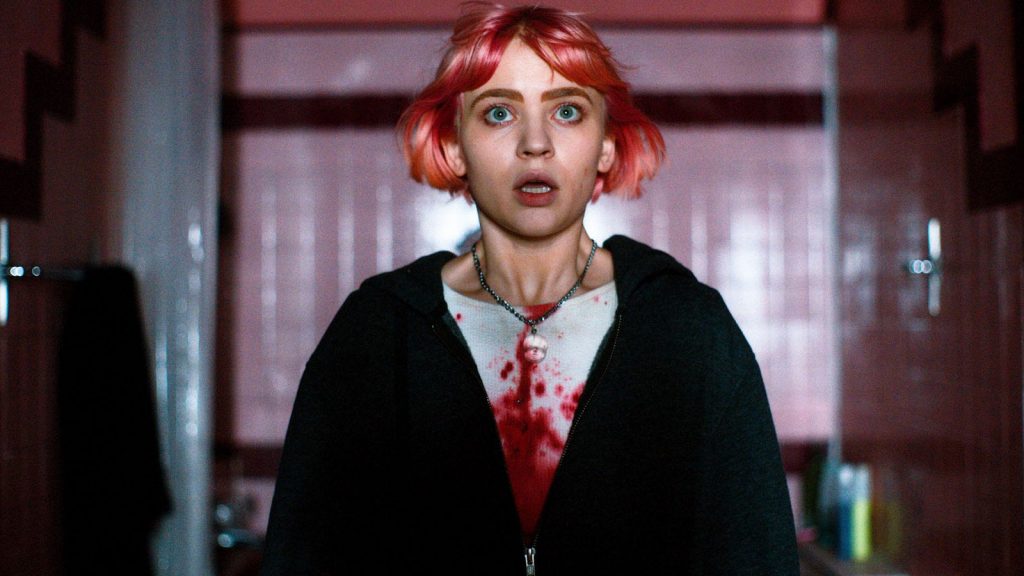
Demons (1971) begins with the sun’s burial. It sinks beneath the horizon, like the circle leaving a Japanese flag. This brief color sequence is the overture to a monochrome samurai nightmare, unfolding on the fringes of Chushingura, the 18th-century Kabuki drama cycle about the 47 ronin. We never glimpse those loyal retainers who famously feigned dissolution to fool their enemy and cut his head off, avenging their lord before committing seppuku themselves. Instead, we follow Gengobe (Katsuo Nakamura), the “48th Ronin,” who forgets that they were only supposed to be pretending. He spends his days drinking and lounging around with Koman (Yasuko Sanjo), a geisha soon to be sold to a cruel merchant. Lovestruck Gengobe intervenes, paying off her debt with the 100 pieces of gold raised by his long-suffering attendant Hachiemon (Masao Imafuku) as the fee to join the vendetta. It doesn’t seem fair to spoil a film so few have seen. Let’s just say there is a betrayal, and Gengobe doesn’t take it well. Imagine Rosencrantz or Guildenstern taking arms against their own sea of troubles and, rather than dithering along to ignoble ends, carving out a lowborn bloody payback that mocks any notion of honorable revenge.
Apply enough pressure to any genre and watch it transform into horror. Director Toshio Matsumoto does exactly this by first setting up a traditional jidaigeki period piece, then plying it with experimental film techniques like repeat edits, variable film speeds, and fantasy sequences. Some of these tricks were on delirious display in his previous film Funeral Parade of Roses (1969), a New Wave masterpiece set in the gay underground of ’60s Tokyo, but in Demons the style creeps up on the viewer. Matsumoto restrains himself, working with spare sets, minimal lighting, and the static stage blocking one associates with Kabuki theater. Aside from an early dream sequence that is clearly marked off from the rest of the action, the story proceeds with all the conventions of a stage play—until the moment when Gengobe decides where to spend his gold. We watch this scene happen one way and then rewind and play a different way, informing us after the fact that we were in the mind of Gengobe. By refusing to signal this and other fantasy sequences, Matsumoto disorients the audience, softening us up before he launches us into pitch dark. When we finally reach the slow-motion shots of surging gore, it becomes clear that this is no filmed stage play, and we feel as unmoored as the samurai himself.
A key work for understanding Demons may be Atman (1975), Matsumoto’s trippy 12-minute short that presents a seated figure in a Noh hannya mask (image of a jealous demoness) alone in a field. A rapid-fire assault of film fragments, shots of the motionless figure taken from hundreds of different angles, are assembled in such a way as to make the person appear to hurtle through space. I can’t imagine a better depiction of the action of hatred and rage on the human psyche. Thoughts make puppets of us all, and jealous thoughts are what transform Gengobe into Shura (the Japanese title of the film)—the anti-god of Buddhist cosmology who constructs his own hell out of fury, delusion, and loss. By using his subtly subjective film techniques, Matsumoto pins us there behind the mask with Gengobe so that we suffocate along with him until the very end.
Demons deserves more attention than it gets. Parts of the film are still shocking, and the devastating critique of cherished national narratives, implied here by the grotesque caricature of samurai values, seems globally relevant today. Toward the end, one intertitle—a silent-movie convention that fascinatingly persists in modern Japanese film and television—opines: “This world is a sea of blood.” As a prelude to the climax, it lands like a gut punch because it follows scenes where the stock figures of the first half of the narrative are revealed in the second half to be more complex and capable of real tenderness—but of course, it is too late. The island moments of sympathy, sacrifice, and familial love are what make the obscene Grand Guignol all the bleaker, because we have glimpsed a world that might have been.

a writer living outside Philadelphia, is currently working on a horror project set in western Pennsylvania. He co-wrote the movie Anamorph, starring Willem Dafoe.
The opening images of Kaneto Shindo’s exquisite, dread-drenched, medieval Japan–set Onibaba (1964) are overlaid with telegraphic fragments of text: “THE HOLE. DEEP AND DARK…”
BY JOSÉ TEODORO | November 15, 2024
Consider the Dies Irae. Eight dire notes to remind you that you are going to die. This musical phrase from a 13th-century plainchant...
BY TOM PHELAN | July 26, 2024
The tale of an amateur entomologist (Eiji Okada) lured by seemingly amiable rural folk into a sand pit from which he is unable to escape, Woman in the Dunes would seem to generate its particular strain of terror from our primal fear...
BY JOSÉ TEODORO | October 31, 2022

This pre-Code offering packs a lot of story into its typically brisk running time, with several plot threads weaving together a (not always successful) tapestry of spooky and criminal doings.
READ MORE >
BY ANN OLSSON | Month 00, 2021

In what could be the fastest-resulting rape revenge movie, a drunken lout brutally forces himself on Ida, the young woman who doesn't return his affections, during a party over Labor Day.
READ MORE >
BY LAURA KERN | Month 00, 2021

Beast is a lot of movies in one package - fractured fairy tale, belated-coming-of-age story, psychological drama, regional horror film - but above all it's a calling card for its leading lady, Jessie Buckley.
READ MORE >
BY LAURA KERN | Month 00, 2021